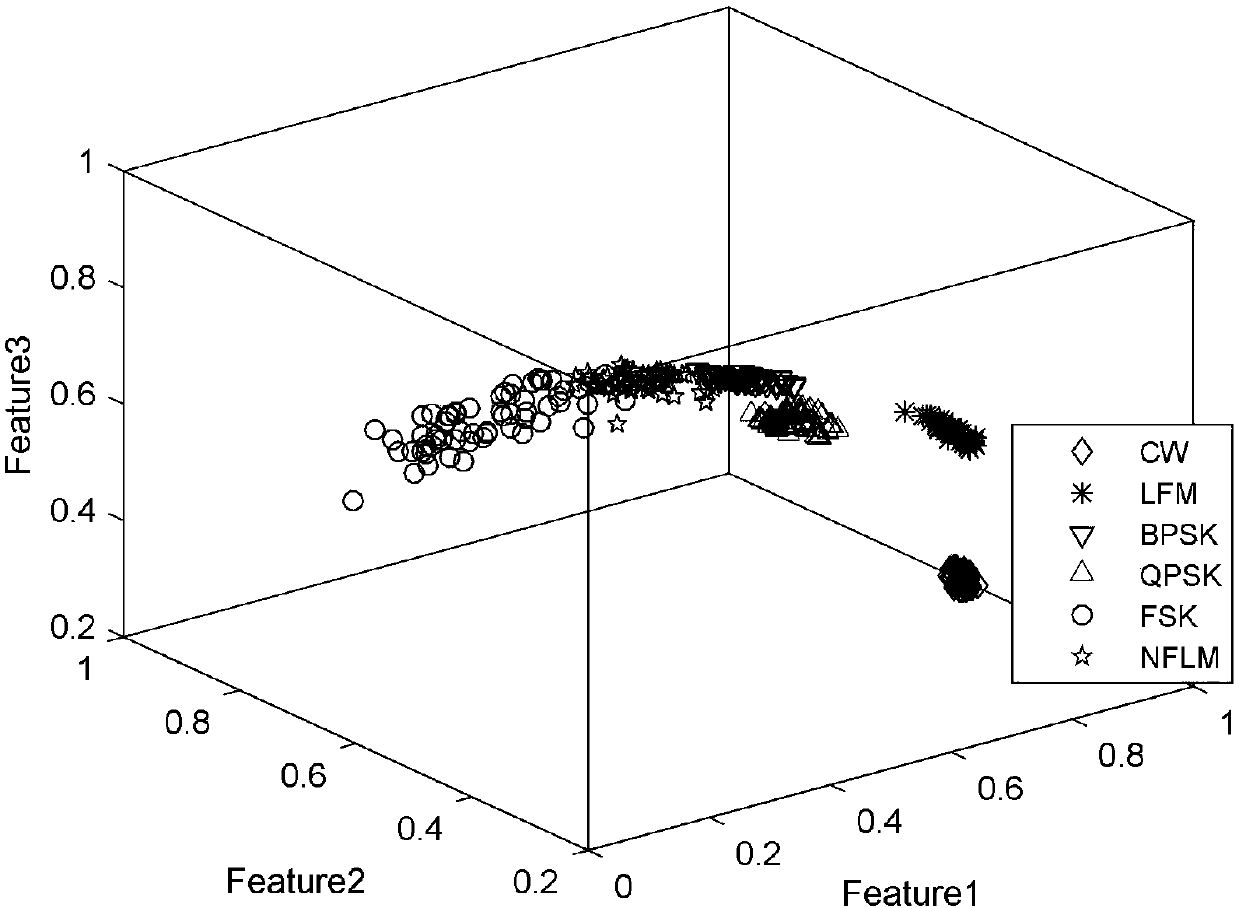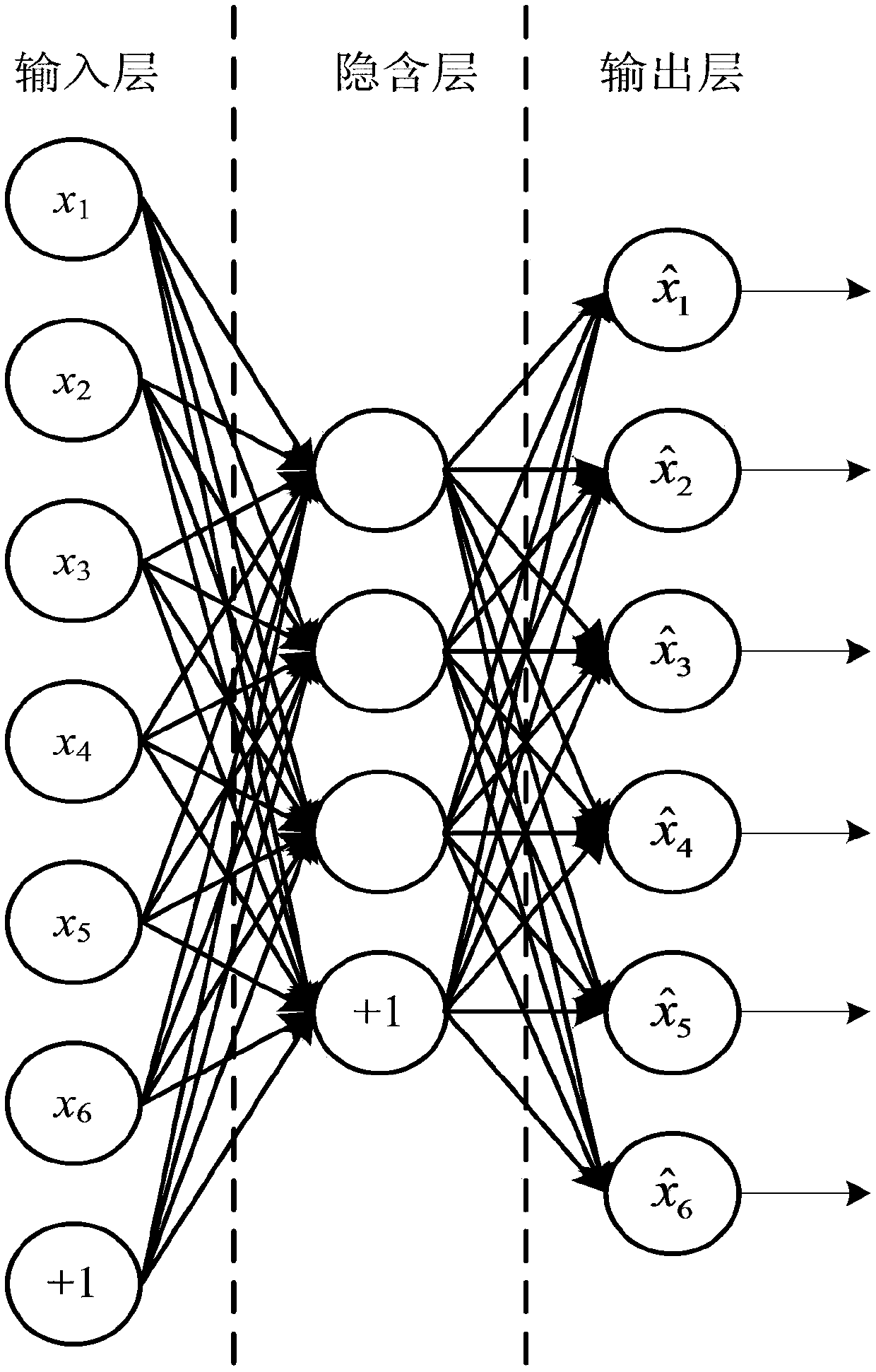Radar radiation source signal depth pulse internal feature automatic extraction method
A radar signal, automatic extraction technology, applied in the direction of instruments, biological neural network models, calculations, etc., can solve the problems of insufficient objectivity, achieve the effect of clear classification boundaries, high accuracy rate, and enhanced linear separability
- Summary
- Abstract
- Description
- Claims
- Application Information
AI Technical Summary
Problems solved by technology
Method used
Image
Examples
Embodiment Construction
[0036] The technical solutions of the present invention will be further described below in conjunction with the embodiments.
[0037] Firstly, the framework of the autoencoder is analyzed, and then the SAE is obtained by imposing specific sparsity constraints. Finally, the sparse autoencoder is optimized and its training scheme is determined, and the depth intrapulse features of the radar signal are automatically extracted by using the parameters of the encoding layer.
[0038] When optimizing the deep autoencoder for extracting intravein features, it is first necessary to add sparse constraints to the deep autoencoder, and then increase the number of hidden layers and neurons, adjust the distribution of hidden layer nodes and change the weights Optimize the basic framework of DAE; Finally, according to the needs of different tasks, select the appropriate cost function and its optimization strategy hidden layer quality factor and performance index when optimizing system paramet...
PUM
 Login to View More
Login to View More Abstract
Description
Claims
Application Information
 Login to View More
Login to View More - R&D
- Intellectual Property
- Life Sciences
- Materials
- Tech Scout
- Unparalleled Data Quality
- Higher Quality Content
- 60% Fewer Hallucinations
Browse by: Latest US Patents, China's latest patents, Technical Efficacy Thesaurus, Application Domain, Technology Topic, Popular Technical Reports.
© 2025 PatSnap. All rights reserved.Legal|Privacy policy|Modern Slavery Act Transparency Statement|Sitemap|About US| Contact US: help@patsnap.com



